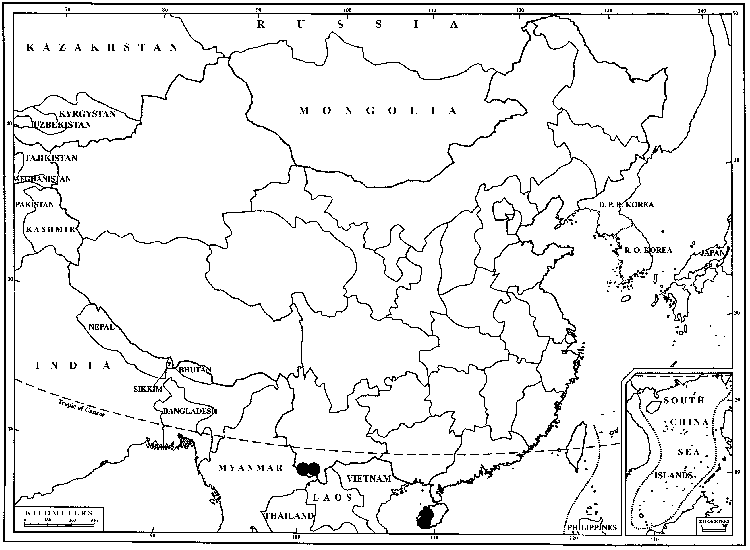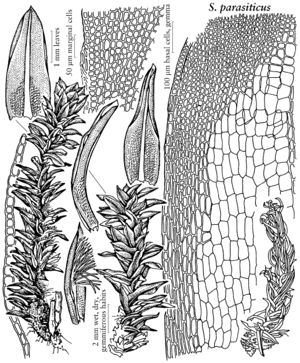Difference between revisions of "Syrrhopodon parasiticus"
Ann. Sci. Nat., Bot., sér. 8. 1: 298. 1895,.
FNA>Volume Importer |
imported>Volume Importer |
||
| (3 intermediate revisions by 2 users not shown) | |||
| Line 9: | Line 9: | ||
|name=Bryum parasiticum | |name=Bryum parasiticum | ||
|authority=Bridel | |authority=Bridel | ||
| + | |rank=species | ||
|publication_title=Muscol. Recent. | |publication_title=Muscol. Recent. | ||
|publication_place=2(3): 54. 1803 | |publication_place=2(3): 54. 1803 | ||
| Line 15: | Line 16: | ||
|name=Calymperes filigera | |name=Calymperes filigera | ||
|authority=Austin | |authority=Austin | ||
| + | |rank=species | ||
}} {{Treatment/ID/Synonym | }} {{Treatment/ID/Synonym | ||
|name=Calymperopsis parasitica | |name=Calymperopsis parasitica | ||
|authority=(Bridel) Brotherus | |authority=(Bridel) Brotherus | ||
| + | |rank=species | ||
}} {{Treatment/ID/Synonym | }} {{Treatment/ID/Synonym | ||
|name=Syrrhopodon filigerus | |name=Syrrhopodon filigerus | ||
|authority=(Austin) R. S. Williams | |authority=(Austin) R. S. Williams | ||
| + | |rank=species | ||
}} | }} | ||
|hierarchy=Calymperaceae;Syrrhopodon;Syrrhopodon parasiticus | |hierarchy=Calymperaceae;Syrrhopodon;Syrrhopodon parasiticus | ||
| Line 48: | Line 52: | ||
-->{{#Taxon: | -->{{#Taxon: | ||
name=Syrrhopodon parasiticus | name=Syrrhopodon parasiticus | ||
| − | |||
|authority=(Bridel) Bescherelle | |authority=(Bridel) Bescherelle | ||
|rank=species | |rank=species | ||
| Line 63: | Line 66: | ||
|publication year= | |publication year= | ||
|special status= | |special status= | ||
| − | |source xml=https:// | + | |source xml=https://bitbucket.org/aafc-mbb/fna-data-curation/src/2e0870ddd59836b60bcf96646a41e87ea5a5943a/coarse_grained_fna_xml/V27/V27_972.xml |
|genus=Syrrhopodon | |genus=Syrrhopodon | ||
|species=Syrrhopodon parasiticus | |species=Syrrhopodon parasiticus | ||
Latest revision as of 21:29, 5 November 2020
Plants solitary, gregarious, or tufted, dark green to brownish, to 2 cm but mostly much shorter. Leaves dimorphic; vegetative 2–4 mm, loosely contorted when dry; distal lamina somewhat reflexed above shoulders, often somewhat folded when wet, oblong to broadly lanceolate, apex acute; margins mostly bordered entirely or in part with hyaline cells at least on some leaves, entire; medial cells distinct, 8–10 µm, bulging adaxially, smooth to 1-papillose abaxially; cancellinae ending in acute angles distally; gemmiferous leaves often aggregated into splash-cup comae at stem tips, tightly appressed when dry, spreading-ascending when wet, oblong-deltoid, acute. Gemmae filamentous, smooth, abundant, adaxial along costa of distal lamina. Seta single or 2–3 per perichaetium, 2–3 mm. Capsule emergent to exserted, 1–1.5 mm; peristome vestigial.
Phenology: Capsules mature Mar.
Habitat: Twigs and bark of shrubs and small trees, humid forests
Elevation: low elevations (0-100 m)
Distribution

Ala., Fla., Ga., La., Miss., Tex., Mexico, West Indies, Central America, South America, Asia, Africa, Australia.
Discussion
In dry plants of Syrrhopodon parasiticus, the abaxial surface of the costa is often very conspicuous, an aid to identification in the field. In the northern portion of its range plants are mostly small and inconspicuous, but in southern Florida the plants are often robust, tufted, and conspicuous. Plants with sporophytes are restricted to south of Highlands County, Florida. Robust plants in southern Florida often have teniola-like intramarginal fetures in the proximal parts of the leaves.
